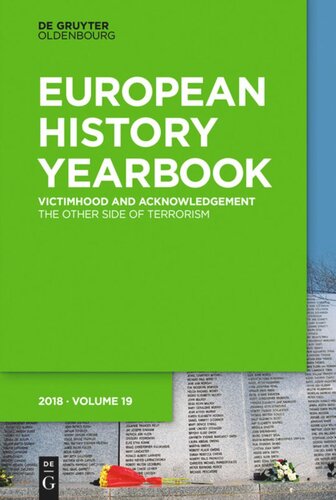

Most ebook files are in PDF format, so you can easily read them using various software such as Foxit Reader or directly on the Google Chrome browser.
Some ebook files are released by publishers in other formats such as .awz, .mobi, .epub, .fb2, etc. You may need to install specific software to read these formats on mobile/PC, such as Calibre.
Please read the tutorial at this link: https://ebookbell.com/faq
We offer FREE conversion to the popular formats you request; however, this may take some time. Therefore, right after payment, please email us, and we will try to provide the service as quickly as possible.
For some exceptional file formats or broken links (if any), please refrain from opening any disputes. Instead, email us first, and we will try to assist within a maximum of 6 hours.
EbookBell Team

4.4
42 reviewsThe history of terrorism has been largely a history of perpetrators, their motives and actions. The history of their victims has always seemed to be of secondary importance. But terrorism is communication by violence, and its efficiency depends significantly on the selection and the treatment of the victims by the perpetrators, on the one hand, and the perception and acknowledgement of victimhood by the public, on the other. How does it affect our picture of the history of terrorism then, if the victims are moved centre stage? If the focus is put on their suffering, their agency, their helplessness, or on how they are acknowledged or exploited by society, politics and media? If the central role is taken into account which they play in terrorist propaganda as well as in the emotional response of the public? The contributions to this edition of the European History Yearbook will examine such questions in a broad range of historical case studies and methods, including visual history. Not least, they aim at historicizing the roles of survivors and relatives in the social process of coming to terms with terrorist violence, a question highly relevant up to the present day.